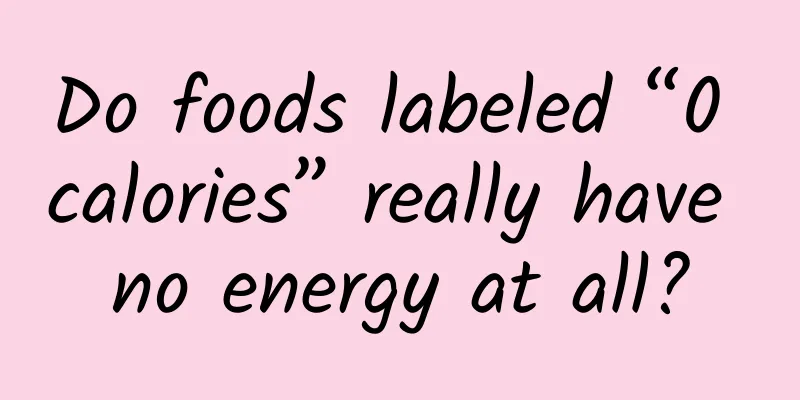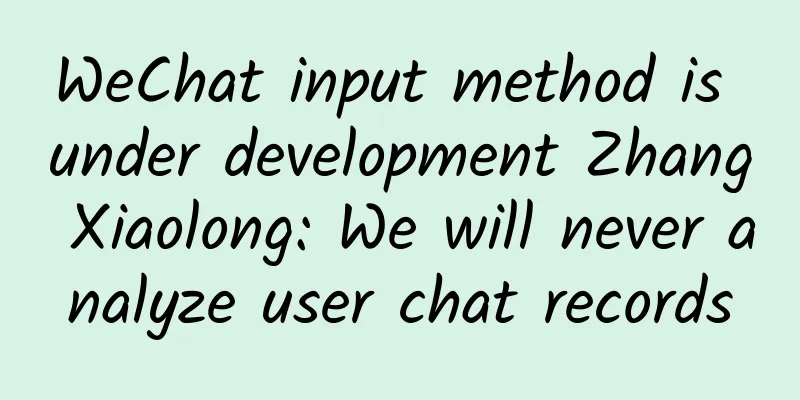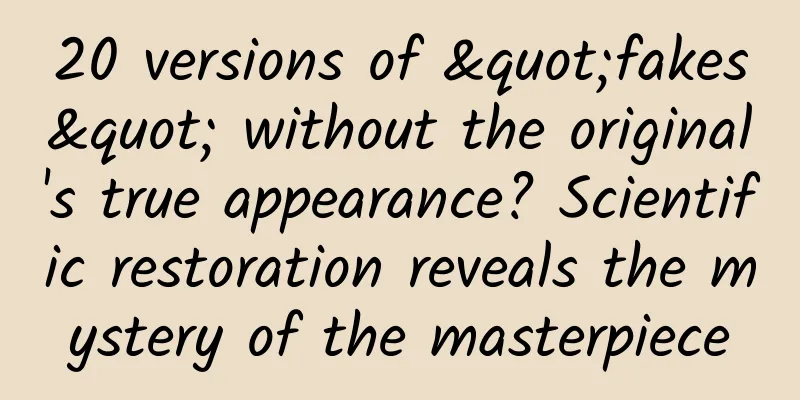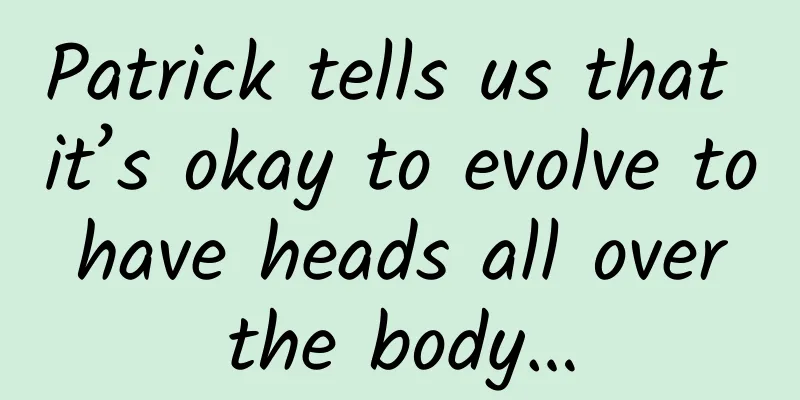Do foods labeled “0 calories” really have no energy at all?

|
As the weather warms up, have the weight loss army started to work again? As the saying goes, "70% of weight loss depends on diet and 30% on exercise." When losing weight, everyone should eat less. Some people (like me) even download apps to record the food and amount they eat every day and calculate calories. Image source: Screenshot of an APP So, how are calories calculated? Can you eat foods labeled "0 calories" without worrying about eating them? Today, let's uncover the mystery of calories. 01 How are food calories measured? The word calorie comes from the Latin word calere, which means to heat up. It was introduced into scientific terminology as early as the well-known Lavoisier . Lavoisier overturned the phlogiston theory, named oxygen, and discovered that the principle of breathing and combustion consuming oxygen is the same, but he probably didn't expect that calories would become an important indicator in the struggle of modern people to lose weight. Image source: "Lavoisier and his Wife" oil painting There are two main methods to measure food calories, namely the direct method and the indirect method. (1) Direct method The direct method, also known as the direct combustion method, requires a professional calorimeter. The main components of the calorimeter are the combustion chamber and the water around the combustion chamber. The food sample to be tested is placed in the combustion chamber for complete combustion. The energy released by the combustion of the food will cause the surrounding water to heat up. At normal temperature and pressure, each milliliter of water needs to absorb about 1 calorie of energy for every 1 degree Celsius increase in temperature. Therefore, as long as the degree of water increase is measured, the calories per unit weight of food can be calculated. However, this method is relatively complicated, has high requirements for instruments, and is rarely used. (2) Indirect method The indirect method, also known as the calculation method, is the method used to calculate the energy of food in the Chinese Food Composition Table. At the end of the 19th century, American chemist Wilbur Olin Atwater calculated the calories of the three major macronutrients (protein: 4 kcal/g, fat: 9 kcal/g, carbohydrates: 4 kcal/g) by burning different nutrients. Therefore, you only need to multiply the gram weight of each energy-supplying nutrient by the corresponding energy conversion coefficient and then add them up to indirectly calculate the calories of the food. Atwater's device measures calories burned from food and exercise Image source:syourdoctorsorders.com 02Do foods labeled “0 calories” really have no energy at all ? According to the National Food Safety Standard - General Rules for Nutrition Labeling of Prepackaged Foods (GB 28050-2011), solid foods with an energy content of ≤17 kJ/100 g and liquid foods with an energy content of ≤17 kJ/100 mL can be claimed to be “energy-free”[1]. The synonym of “no” is “zero (0)”, so “0-calorie” foods refer to foods with extremely low or almost no energy. Although “0-calorie” foods are not necessarily absolutely energy-free, even if they contain energy, the energy is almost negligible (17 kJ is approximately equal to 4 kcal). Source: National Food Safety Standard - General Rules for Nutrition Labeling of Prepackaged Foods (GB 28050-2011) Those who have been trying to lose weight for a long time may find that some of the so-called "0-calorie" foods are tasteless, while others are very sweet. What's going on? In fact, non-sweet "0-calorie" foods generally include water/beverages without added sugar, high-fiber vegetables or fruits and their products, etc., while sweet "0-calorie" foods are generally non-sweet "0-calorie" foods with sugar substitutes added. Sugar substitutes have a sweet taste, but compared to sugar, they have very low energy or no energy. Synthetic aspartame Source: Foodie Research Institute 03 When losing weight, can you eat “ 0-calorie ” foods safely? ( 1 ) Non-sweet “0-calorie” foods can When losing weight, "0-calorie" and non-sweet foods are a good choice. These foods are very friendly to people who are losing weight. They usually contain lower energy, help control overall energy intake, and are rich in dietary fiber, which can increase satiety and help reduce the possibility of overeating. ( 2 ) Sweet “zero-calorie” foods are not recommended For "0-calorie" foods with added sugar substitutes, although sugar substitutes themselves do not provide energy, their effects on the human body are multifaceted. Excessive consumption of sugar substitutes may make the brain mistakenly believe that the body has taken in sugar and secrete insulin as a result. This phenomenon is called "cephalic phase insulin release", but in fact there is no glucose. Over time, the signal for the body to secrete insulin will become disordered, which also increases the risk of chronic diseases such as obesity and diabetes . A large number of population studies have shown that weight control with sugar substitutes is more theoretical and may also produce small benefits in obese diabetic people; for the general population, long-term consumption of sugar substitutes may increase the desire for sweets and drinks, leading to obesity [2]. The guidelines issued by the World Health Organization also do not recommend the use of sugar substitutes to control weight. Image source: Photo Network In fact, calories are not our enemy. They are just reminding us to maintain balance and self-discipline. Even if we want to lose weight, we don’t have to demonize calories. Losing weight requires a comprehensive consideration of factors such as diet, exercise and lifestyle. The best way is to develop a balanced diet plan that includes all kinds of food, such as protein, healthy fats, whole grains and other fruits and vegetables to ensure that you can stay healthy while losing weight. References [1] Liu Ding, Ge Yu. GB7718-2011 National Food Safety Standard General Rules for Prepackaged Food Labeling[D]. , 2012. [2] Pang MD, Goossens GH, Blaak E E. The impact of artificial sweeteners on body weight control and glucose homeostasis[J]. Frontiers in nutrition, 2021, 7: 333. Author: Wang Zhengyuan, PhD in Nutrition, Deputy Chief Physician, Shanghai Center for Disease Control and Prevention Planning & Editing: Ding Dong Title image source: Photo Network, Gaoding Design |
<<: Bringing the "sky" to the ground, he "blasted" a new path for Chinese wind tunnels
>>: A profound question: What is equality?
Recommend
GoFun Travel enables the development of the entire life cycle of the industry chain and jointly seeks diversified value space in the travel field
On October 23, GoFun Travel held a strategic conf...
Where does the poop on the plane go?
This issue is planned by: Doraemon, Little Dandel...
Lazy Field · Today's Toutiao project gameplay, Toutiao video project, single number income is 50-500 can be batched
Lazyman Field·How to play the Toutiao project, a v...
iFlytek: The dream of a market value of 100 billion yuan is shattered? Relying on government subsidies to increase profits
Artificial intelligence has been popular all over...
[Creative Cultivation Program] Does playing with your phone hurt your brain? What the fruit fly experiment tells us
Presumably, for many people, checking their phone...
Proving Einstein wrong again! Scientists verify the famous Bell test in superconducting circuits for the first time
In 2022, three physicists were awarded the Nobel ...
Does the Zhengxin Mini Program take up space? Do WeChat mini-programs take up space on my phone?
Will using mini-apps take up storage space on you...
WeChat has been updated again. Have you noticed these four practical little features?
As a domestic instant messaging tool, WeChat has ...
Community, e-commerce, tools, which one is the future of the women's market?
Since the rise of the mobile era, consumer habits...
How much does it cost to find an African to record a birthday blessing video?
In recent days, photos and videos of African blac...
The official version of iOS 17.1.1 is released, these problems are finally fixed!
iOS 17.1.1 official version released This morning...
Will Russia launch a new type of nuclear weapon? What exactly is an anti-satellite satellite?
Any weapon that can destroy satellites on a large...
Foxconn begins to come to the fore. What kind of game is Terry Gou playing?
Since Foxconn acquired Sharp, every decision made...
What changes does TCL's high-end sub-brand XESS represent for the TV industry as a disruptor again 35 years later?
A 35-year history is enough to be called a develo...
Alibaba established Pingtouge chip company named by Jack Ma
At this year's Yunqi Conference, Alibaba anno...









